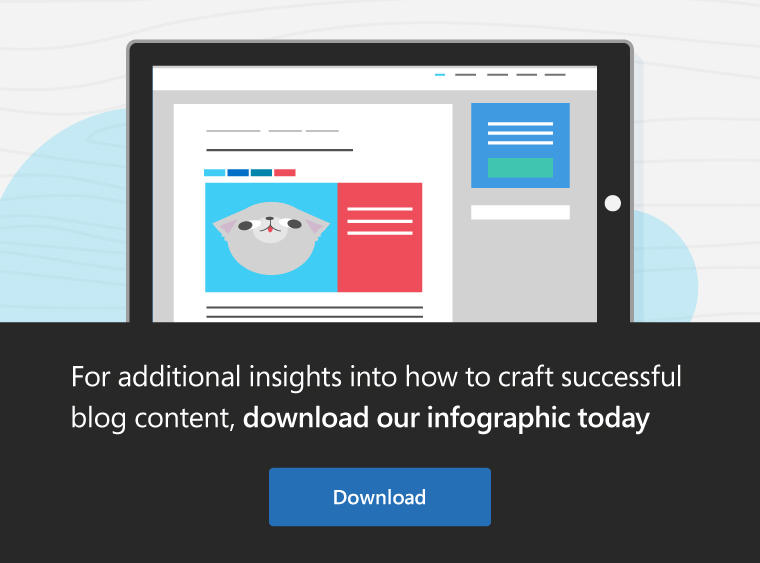
Creating content with purpose: Focus and structure
When it comes to content, getting started is often the hardest part. In the coming weeks, we’ll discuss many of the challenges that come with getting a content marketing campaign off the ground—building an editorial calendar, finding a narrative, and refining your brand voice. While those elements are key components of your content machine, as we mentioned in our strategy piece, they need something to hold them together. Your brand has a huge library of knowledge, and determining which of your information assets make for valuable content can be an intimidating experience. During this ambiguous stage, it’s important to nail down two elements for individual pieces of content and your campaign at large: focus and structure.
Focus creates your parameters and reflects the strategy you’ve already created. Who are you speaking to? What do you want them to feel, to know, and to do, after they’ve finished consuming your content? What is the scope of your campaign? By articulating a clear intent for your content strategy, you further refine your end goal and weed out any unnecessary noise.
If focus is your what, then structure is your how. Structure is the tactical element of the experience you’re creating. How does each paragraph fit into your message? How does each piece of content benefit your overall campaign? A clear structure shapes your narrative so that each point leads to the next and helps bring clarity to your message. If your content marketing campaign is a journey, your structure is the road that leads your audience to the final destination.
Guiding your audience
Together, your focus and structure guide the audience towards your intended take-away. Before we go too far, we’re going to borrow a concept teachers have used for years called “Instructional Scaffolding”. Scaffolding is an educational process that relies on slowly and systematically building knowledge. A teacher starts the semester with basic, foundational knowledge, before moving on to more complex ideas. For example, students have to understand what numbers are before they can grasp the concept of mathematics. Then, once they’ve mastered the difference between 1, 7, 16, and so on, a teacher can introduce how those numbers can interact with each other—addition, and subtraction, then on to multiplication and division. In marketing, we refer to a similar process with the sales funnel—slowly introducing customers to broader offerings before moving on to more pointed messages.
These foundational models work by shaping content around your audience’s journey, and your content ought to follow a similar process. Start campaigns with broad-stroke concepts that speak to a wider audience, then slowly transition to more direct messaging and specific problems that you’re specifically equipped to solve. The goal is to engage as many relevant readers as you can from the start by speaking to more industry-wide needs and interests, and then slowly inch towards creating more qualified leads over time.
This process:
- Establishes a basis of trust as you move together through your content experience
- Forces you to articulate ideas and assumptions you may have taken for granted
- Sets a clear path for transitioning your audience from anonymous viewers to certified leads
By creating content that guides your readers through your narrative, you establish your brand as a trusted resource for their most important needs and interests, and position yourself positively when it comes to introducing that final push, whether it be a sale, subscription, or investment.
Keep it simple
With a sound structure guiding your audience, it’s important to remember that content needs to engage just as much as it informs. This is where focus comes into play. The right scaffolding certainly helps, but effective content needs to be easy to understand and apply. Keep your message simple with these easy tips:
Tip #1: Know when to use technical language
There’s a place for technical writing. Manuals, handbooks, and user guides certainly have their role in the customer experience, but while these pieces do an excellent job of relaying information, they’re far from compelling reads for an outside audience. Technical language creates a barrier of entry for new readers, slows down the reading process, and can quickly confuse readers, prompting them to navigate away from your piece to translate a concept, or give up on the page entirely.
Instead, focus on making your work accessible. Fight the impulse to sound impressive and instead, strip your ideas down to their essentials. There’s certainly room for technical language in the right piece and the right audience, but even in a niche setting, accessible language makes your content easier to digest, and ultimately drives engagement.
Tip #2 Format to the customer’s advantage
Content is more than just the words on the screen, it’s how they’re presented. Emphasize key points, links, and call-to-actions with bullet points, sub headers or specialized typography like bold or italics. This makes skimming articles easier on your audience, and further articulates the structure you’ve already created.
Tip #3 Revision is your friend
As da Vinci would say, “A work of art is never finished, only abandoned.” There’s an understandable desire to post your creations as soon as you’ve finished the first draft, but often, that first draft is less a finished work and more a loose collection of ideas. Revision helps zero-in on your intention, clear out unnecessary language, and ensure that each part of your content works exactly the way you want it to.
Simplicity in language, structure, and concept, encourages readers to join you on this content marketing journey. But, simple doesn’t have to mean entry-level. As you guide your audience through the campaign, build on your foundation and introduce more complicated ideas when the time comes.
Focus and structure are the keys to developing engaging content experiences. There are millions of websites out there promoting content for content’s sake, and thousands more pop up every day. In this mass of ideas, quizzes, listicles, and hot takes, customers flock to intentional, relevant work. Take the time to review your strategy, and zero in on the key actions and messages your brand hopes to land. Keep them simple, and determine how you’ll guide the audience to developing greater trust in your brand.
If you haven’t already, visit our previous post, How content marketing rethinks the customer experience and visit Microsoft in Marketing for more great features.





